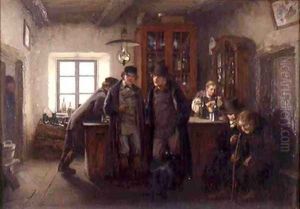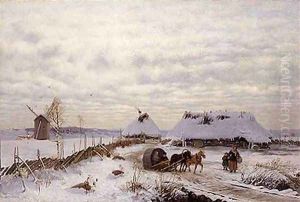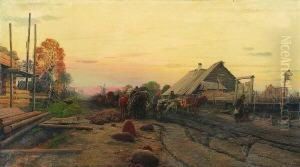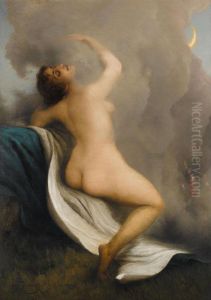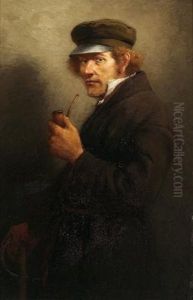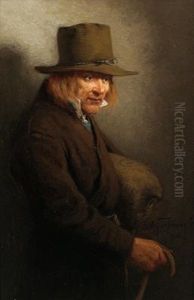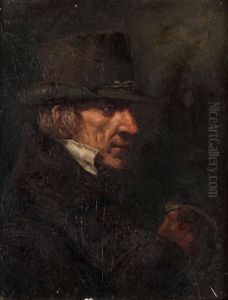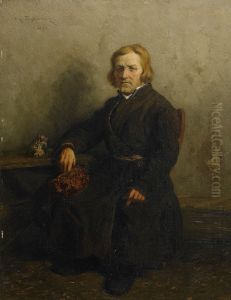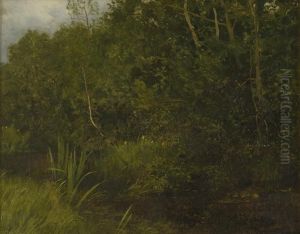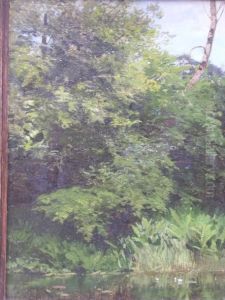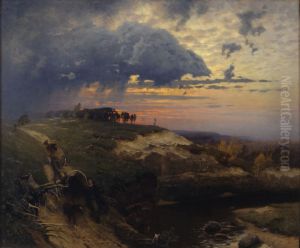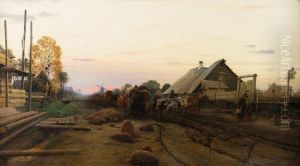Oskar Hoffmann Paintings
Oskar Hoffmann was a Baltic German painter known for his work during the late 19th century and early 20th century. Born on August 2, 1851, in Tartu, then part of the Russian Empire (now Estonia), he grew up in an era when the Baltic region was a melting pot of cultures and nationalities, including Germans, Estonians, and Russians. Hoffmann's early life and education were influenced by this multicultural environment, which would later be reflected in the diverse subjects of his paintings.
Hoffmann studied at the Saint Petersburg Academy of Arts, which was one of the most prestigious art institutions in the Russian Empire. During his time there, he was influenced by the academic style of painting, which emphasized classical techniques and subjects. After completing his studies, he traveled across Europe, further honing his skills and exposing himself to various artistic movements and styles.
Throughout his career, Hoffmann was known for his genre scenes, portraits, and landscapes. His work often depicted the rural life of peasants and the natural beauty of the Baltic countryside. His paintings were celebrated for their realistic detail, use of color, and emotional depth. Hoffmann's ability to capture the nuances of everyday life and the character of his subjects won him acclaim during his lifetime.
Oskar Hoffmann's career spanned a period of significant change in the art world, with the rise of modern art movements such as Impressionism and Post-Impressionism. However, he remained largely true to his academic roots, focusing on traditional painting techniques and compositions. Despite this, some of his work does show an awareness of the changing artistic landscape, with looser brushwork and a brighter palette.
Hoffmann was not only a painter but also a respected teacher. He took on this role later in his career, passing on his knowledge and skills to the next generation of artists. His influence thus extended beyond his own oeuvre, contributing to the development of the arts in the Baltic region.
Oskar Hoffmann died on October 14, 1912, in Düsseldorf, Germany. Although not as widely known today as some of his contemporaries, Hoffmann's work remains an important part of the artistic heritage of the Baltic region. His paintings can be found in various museums and private collections, appreciated for their historical value and artistic merit.
